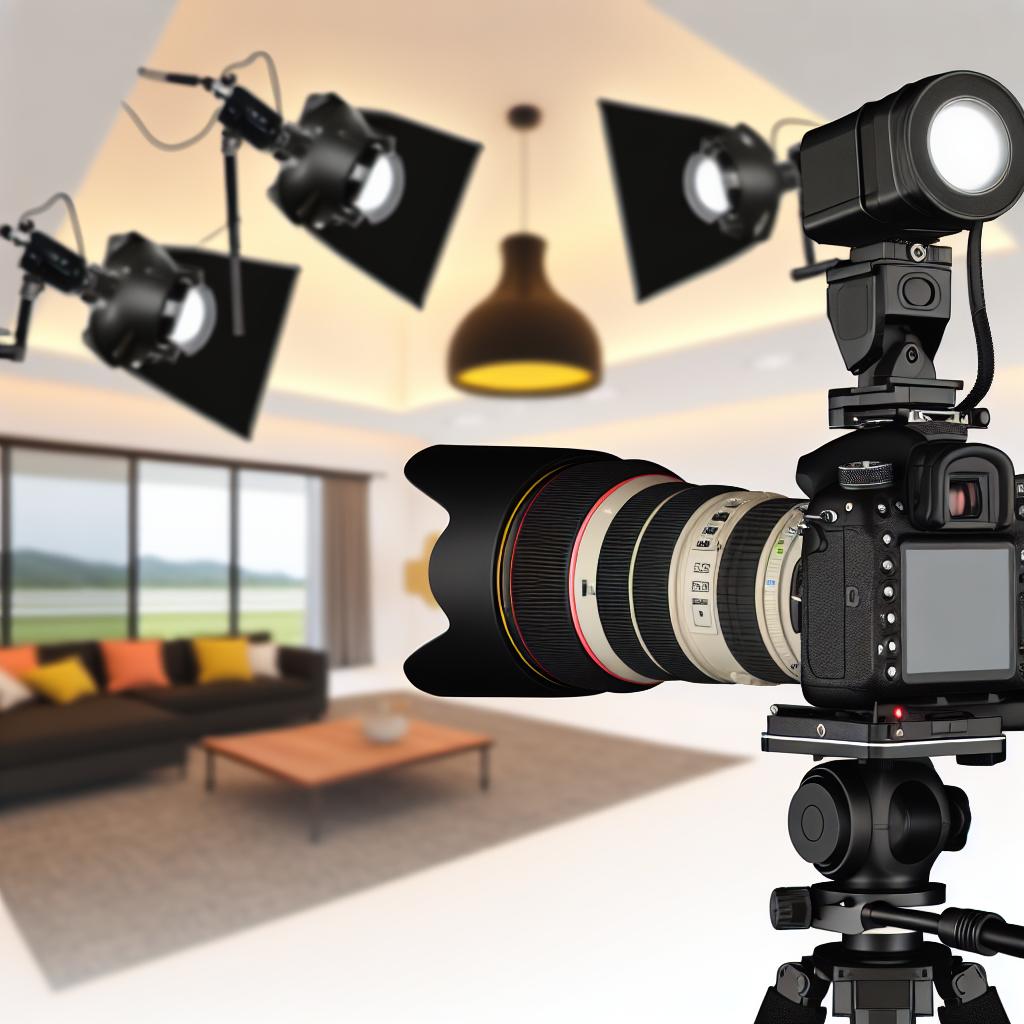**Mastering Real Estate Photography: Unveiling the Essential Virtual Tour Equipment to Boost Your Listings**
Virtual tours have revolutionized the real estate industry, providing potential buyers a vivid and immersive experience. To succeed in this dynamic market, mastering real estate photography is essential. Understanding and utilizing the right equipment for virtual tours can dramatically enhance your listings, making them more appealing and competitive. In this comprehensive guide, we delve into the must-have equipment that can elevate your real estate photography to the next level.
Understanding the Impact of Virtual Tours in Real Estate
As the digital age progresses, virtual tours have become a staple in real estate marketing. Their ability to provide a realistic and detailed view of a property without the need for physical visits is invaluable. For real estate photographers, this means mastering virtual tours can significantly increase their appeal to both sellers and buyers. By offering a comprehensive view, these tours save time and resources, facilitating quicker and more efficient transactions. Understanding this impact is crucial for photographers aiming to edge out the competition.
Virtual tours offer several advantages. They increase engagement, as potential buyers spend more time exploring a property online. This extended interaction often translates to higher interest and quicker decision-making. Additionally, virtual tours can showcase a home’s aesthetics far better than static images, allowing buyers to appreciate the spatial dynamics and flow of a property. This immersive experience reduces geographical constraints, opening opportunities for international buyers and broadening your market reach.
Investing in virtual tour capabilities can distinguish your real estate listings in a crowded digital marketplace. With more buyers valuing convenience and efficiency, equipping yourself with the knowledge and tools to create stunning virtual tours is more crucial than ever. It’s not just about capturing images, but crafting a storytelling experience that resonates with potential buyers.
Essential Camera Equipment for Virtual Tours
To capture stunning virtual tours, investing in the right camera equipment is fundamental. A high-quality DSLR or mirrorless camera equipped with high resolution ensures that images are clear and vivid, capturing every detail of a property. Considering the wide range of options available, selecting a camera that suits your specific needs and budget is key. Equally important is a fisheye or wide-angle lens, allowing you to capture the entirety of a space, which is vital in creating comprehensive virtual tours.
Stabilization equipment is another essential consideration. Tripods are indispensable, providing stability for sharp, focused shots. For smooth panning shots, a gimbal stabilizer ensures that video footage captures seamless motion, enhancing the viewer’s immersive experience. Investing in quality stabilization tools will undoubtedly elevate your final output, providing potential buyers with a professional-grade tour.
Finally, lighting cannot be neglected. While natural light is ideal, having external light sources like flash units or LED panels can compensate for poorly lit areas, ensuring that all spaces are perfectly illuminated. Proper lighting helps reveal the best aspects of a property and avoid misrepresentations that can occur due to shadows or dimness, ensuring a consistent and vibrant visual narrative throughout the tour.
The Role of Software in Crafting Effective Virtual Tours
The value of software tools in creating impressive virtual tours cannot be overstated. Modern software allows for the stitching of images into a seamless 360-degree view, providing an interactive platform for potential buyers. When selecting tour creation software, look for intuitive interfaces that offer customization options, allowing adjustments for different property types and audience preferences. Popular choices like Matterport, Kuula, and iStaging offer robust capabilities to enhance your virtual tours through features like wayfinding and interactive hotspots.
Photo editing software such as Adobe Photoshop or Lightroom is also crucial in the post-production phase. These tools enable you to refine your images, correcting lighting issues, enhancing color depth, and eliminating any visual distractions. Well-edited photos are more likely to capture a potential buyer’s attention, emphasizing the property’s features most apt to influence purchase decisions.
Moreover, incorporating virtual staging software can be a game-changer. This technology allows you to add furniture or decor to vacant properties, helping buyers visualize how a space can be used without the need for physical staging. By leveraging the role of software, you transform static images into dynamic presentations that engage and inform your audience.
Choosing the Ideal Platforms for Virtual Tour Hosting
Choosing the right platform to host your virtual tours is essential for reaching your audience effectively. Various platforms offer different advantages, with some focused on ease of use and others providing comprehensive customization and analytics tools. When selecting a hosting platform, consider how seamlessly it can integrate with your website, MLS listings, and social media channels. This integration is vital for maximizing visibility and reaching potential buyers across various digital touchpoints.
Popular platforms like Matterport offer robust hosting solutions with extensive features, including 3D walkthroughs and VR capabilities. These platforms can significantly enhance user engagement, allowing for an interactive exploration of listings that go beyond ordinary slideshows. Additionally, features such as heat maps and viewer tracking provide insights into buyer interest and behavior, allowing real estate professionals to refine their marketing strategies.
Affordability and scalability are also crucial considerations when choosing a platform. Look for services that offer flexible pricing models that grow with your business, ensuring that as your needs change, your chosen service can adapt accordingly. The right platform adds value not just to a single project but to your broader business strategy.
Maximizing the Marketing Potential of Virtual Tours
Once you’ve mastered the technical aspects and created a compelling virtual tour, the next step is to leverage these tours for maximum marketing impact. Promoting your virtual tours through multiple channels is essential for reaching a broad audience. Consider integrating tours into social media campaigns, leveraging platforms like Instagram and Facebook where visual content thrives. Sharing engaging snippet videos can entice followers to delve deeper into full tours listed on your website or another hosting platform.
Search engine optimization (SEO) plays a critical role when marketing virtual tours. Ensure that your tour descriptions and accompanying content are rich in relevant keywords, optimizing searchability and increasing organic traffic. Coupling keywords with high-quality visual content elevates your listing’s ranking potential, providing a dual approach for attracting potential buyers.
Lastly, the power of email marketing should not be underestimated. Sending personalized newsletters highlighting new virtual tours can nurture relationships with potential buyers, keeping your listings top of mind. The key is consistency and relevance, ensuring that your content aligns with subscriber interests and market trends. By maximizing the marketing potential of virtual tours, you create a strategic advantage, differentiating your services in a crowded market, and enhancing your reputation as a leading real estate photographer.




